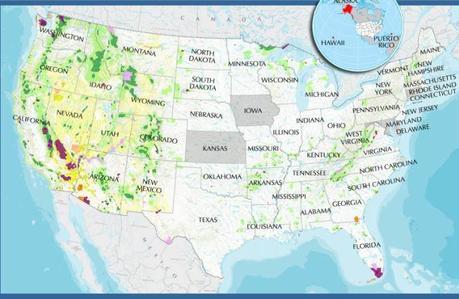Happy National Wilderness Day! It is the day when we celebrate what wilderness we have left here in the United States, and take time to think about the wilderness around the world. You might be thinking that, since we are considered a pretty “wild” country, in many senses of the word, that we would have a lot of wilderness out there, right? Well, not exactly. Actually, true wilderness is dwindling, and it is one of the things that no matter how hard we try, we can’t bring back to its original awe-inspiring glory.
In 1964 the Wilderness Act was passed, which set aside wilderness areas and established the National Wilderness Preservation System (NWPS). Wilderness.net provides a ton of cool information about all the national wilderness areas around the country. These areas are managed by various agencies, including the National Parks Service, U.S. Forest Service, U.S. Fish and Wildlife Service, and the Bureau of Land Management, along with a number of state agencies. To be adopted by congress, an area of land must how almost no human influence, and have some type of ecological, educational, or historical value, among other criteria. Try to think of a place in which you can’t tell humans have effected it… not many come to mind.
Even with over 700 designated wilderness areas in the United States, the whole NWPS makes up only about 4.5% of the entire land area of the country. This is an astonishingly low number when you think about the fact that the entire country used to be wilderness with an astounding amount of biodiversity. The National Parks Service and other land set aside for non-development also covers another few percent of the country, which is great, but still the totals aren’t impressive. Here is a map from wilderness.net illustrating my point. If it looks like there is a lot of color, there really isn’t.

Map Legend
 Bureau of Land Management Wilderness
Bureau of Land Management Wilderness
 Bureau of Land Management NON-Wilderness
Bureau of Land Management NON-Wilderness
 Fish & Wildlife Service Wilderness
Fish & Wildlife Service Wilderness
 Fish & Wildlife Service NON-Wilderness
Fish & Wildlife Service NON-Wilderness
 Forest Service Wilderness
Forest Service Wilderness
 Forest Service NON-Wilderness
Forest Service NON-Wilderness
 National Park Service Wilderness
National Park Service Wilderness
 National Park Service NON-Wilderness
National Park Service NON-Wilderness
View Full Interactive Map HERE
In the book Wild America (one which I will review later), the authors travel the outer rim of the country over the course of the year in search for true wilderness. It shouldn’t take a 30,000 mile car trip to locate the wilderness in this country, but in the end they concluded that what was left of the wilderness in 1953 when they took their journey was in a great deal of danger. They hopped from national park to national refuge in search of what this country used to be: an uncharted, uncut frontier. What they found was a densely populated, polluted country that wasn’t taking care of the little bit of wild America we had left.
Things haven’t changed a whole lot today, but it is getting a little better. Activism on behalf of nature has given a little hope to the situation, and with any luck we might find a politician who is willing to take on the major environmental and ecological problems this country is facing as we wipe out species after species in our own human interests. This problem isn’t completely reversible, and the little we can do can’t be done quickly or cheaply, but we still need to try. We owe it to this country and to this land which have given us everything over the course of our short history here.
